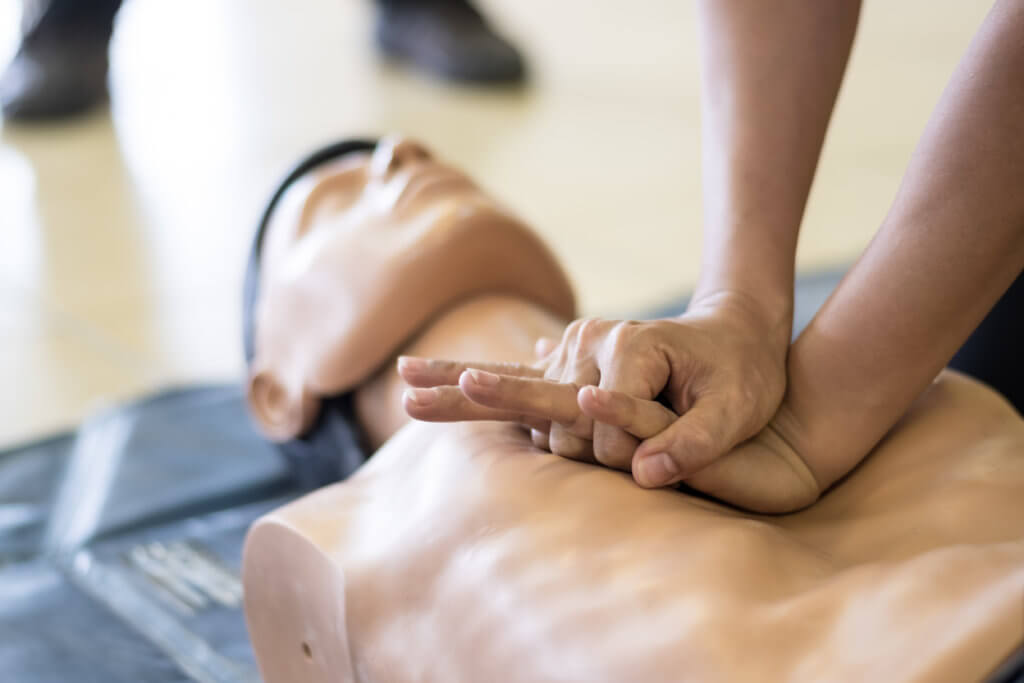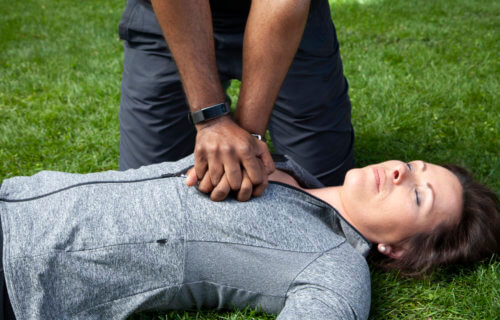WASHINGTON — Early resuscitation with cardiopulmonary resuscitation (CPR) and an automated external defibrillator (AED) can save the life of an athlete who collapses on the field. Unfortunately, new research shows few college athletes could help a fallen athlete before an ambulance arrives.
A survey conducted as part of the study by the American College of Cardiologists revealed that only 50 percent of collegiate athletes were familiar with sudden cardiac arrest, and only 51 percent had received CPR training.
The researchers reviewed cases of sports-related sudden cardiac arrest and found that, in most instances, trained personnel provided CPR. However, only seven percent of cases involved lay-responder athletes administering CPR. The study stressed the need for CPR and AED training for athletes to enhance their ability to respond effectively during emergencies. According to researchers, if an athlete learned CPR at a young age and continued training throughout high school, college, recreational leagues, and beyond, athletes would be highly skilled.
“Typically, the first and closest witnesses to a fallen player are their fellow athletes, so they should become part of the first response team. In addition, athletes are ubiquitous in sports environments—the game, gym, practice facility, player-only training sessions—whereas trainers, coaches, etc. are not,” says Merije T. Chukumerije, MD, a sports cardiologist with Cedars-Sinai Medical Group at the Smidt Heart Institute in Los Angeles and the study’s lead author, in a media release.
Scroll down to see the 7 steps of performing CPR

Chukumerije emphasized that CPR drills should be incorporated into teams’ emergency action plans to ensure that athletes respond promptly by initiating CPR when necessary.
“If we review any sports-related sudden cardiac arrest event, the athlete next to the fallen player is typically shocked, waving over to the medical staff for assistance and backing away from the player. It is very rare that the response is one of action,” Chukumerije concludes. “I would argue that CPR drills for athletes should be part of a team’s emergency action plan so that the initial reaction from players is to get down, check a pulse and initiate CPR if necessary. Time saves lives.”
The findings were presented at the American College of Cardiology’s Care of the Athletic Heart 2023 conference.
7 Steps of CPR, According to the American Red Cross:
- Check the scene for safety, form an initial impression, and use personal protective equipment (PPE).
- If the person appears unresponsive, check for responsiveness, breathing, life-threatening bleeding, or other life-threatening conditions using shout-tap-shout.
- If the person is not responding and is not breathing or is gasping, call 9-1-1 immediately, get equipment, or tell someone to do so for you.
- Kneel beside the unresponsive person. Place the person on their back on a firm and flat surface.
- Give the patient 30 chest compressions.
- Hand position: Two hands centered on the chest
- Body position: Shoulders directly over hands; elbows locked
- Depth: At least 2 inches
- Rate: 100 to 120 per minute
- Allow chest to return to normal position after each compression
- Give 2 breaths.
- Open the airway to a past-neutral position using the head-tilt/chin-lift technique
- Pinch the patient’s nose shut, take a normal breath, and make complete seal over the person’s mouth with your mouth
- Ensure each breath lasts about one second and makes the chest rise; allow air to exit before giving the next breath
- Continue giving sets of 30 chest compressions and two breaths to the patient. Once an automated external defibrillator is available, use it immediately. Minimize interruptions to chest compressions to less than 10 seconds.

